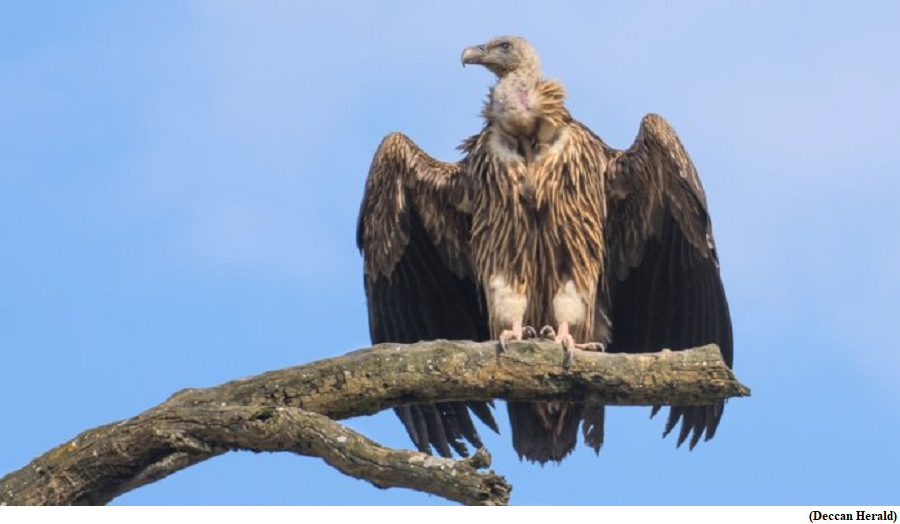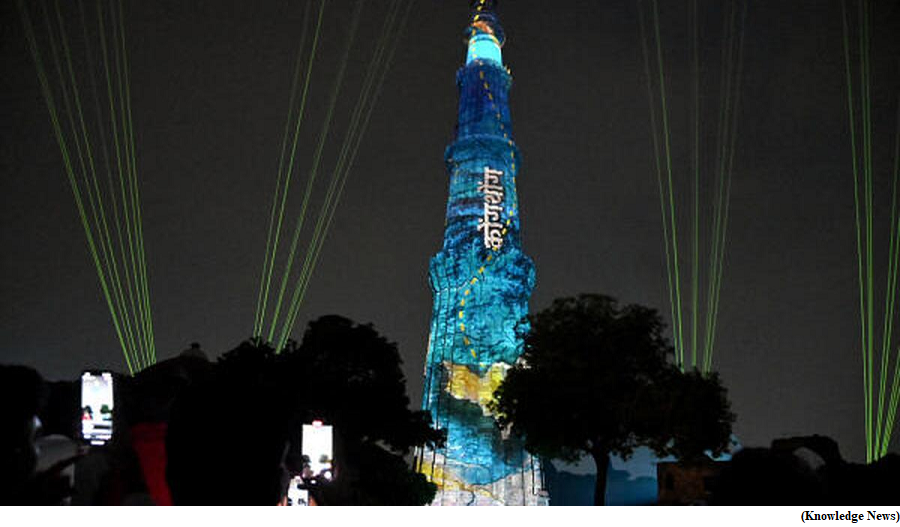Endangered Himalayan vulture, bred in captivity for the first time in India (GS Paper 3, Environment)

Why in news?
- Researchers have recorded the first instance of captive breeding of the Himalayan vulture (Gyps himalayensis) in India at the Assam State Zoo, Guwahati.
Himalayan vulture:
- It is categorised as ‘near threatened’ on the International Union for Conservation of Nature (IUCN) Red List of threatened species.
- The Himalayan vulture is a common winter migrant to the Indian plains, and a resident of the high Himalayas.
Challenges:
- Breeding the species in Guwahati was a daunting task as, in nature, this species breeds in snow-clad mountains.
- But as these birds were kept in zoo for a long time, they acclimatised to the tropical environment.
Vulture Conservation Breeding Centre:
- Four VCBCs established by Bombay Natural History Society (BNHS) at Pinjore in Haryana, Bhopal in Madhya Pradesh, Rani in Assam, and Rajabhatkhawa in West Bengal are involved in conservation breeding of the white-rumped vulture (Gyps bengalensis), slender-billed vulture (Gyps tenuirostris), and the Indian vulture (Gyps indicus).
- The unprecedented scale and speed of declines in vulture populations has left all the three resident Gyps vulture species categorised ‘Critically Endangered’.
Conservation breeding in France:
- The conservation breeding of the Himalayan vulture at the Guwahati Zoo is the second such instance in the world, after France, where the species has been bred in captivity.
Villages, cities to display plaques on local bravehearts
(GS Paper 2, Governance)
Why in news?
- Recently, the Prime Minister announced that 'Meri Mati Mera Desh' campaign will be launched before Independence Day in honor of the country's martyrs.
- Under this, the soldiers of the three armies will take part in the 'Meri Mati, Mera Desh' campaign from August 9 to 15, 2023.

Key Highlights:
- Villages and cities across the country will install a memorial plaque each in their limits with names of local heroes, along with a quote by Prime Minister from August.
- Freedom fighters and defence, Central Armed Police Force and State police personnel who laid down their lives in the line of duty will have their names inscribed on the plaque.
- The plaques, Shilaphalakam, will come up as part of a campaign called Meri Mati, Mera Desh.
- The plaques will be installed near waterbodies, if available, or near panchayat offices and schools.
- The specifications of the plaques, including dimensions and the model art work to be used, have been shared on a portal designed for the purpose.
Amrit Vatika:
- Youth volunteers would collect soil from each panchayat or village and bring them to the block level. From each block, an urn containing all the soil would be brought to the national capital.
- In urban areas, the urns would be brought to the larger municipalities and towns from smaller local bodies before being brought to the capital.
- 8,000 urns were expected in Delhi where they would be used to create a garden, Amrit Vatika. A memorial would also be constructed.
Samudrayaan, India to send three people to depth of 6000 meters in submersible
(GS Paper 3, Science and Technology)
Why in news?
- India's ambitious Samudrayaan project, aimed at exploring the deep ocean and its resources, is set to send three personnel to a depth of 6000 meters in a submersible vehicle.

Samudrayaan project:
- The Samudrayaan project, India's first manned ocean mission, is designed to study deep-sea resources and conduct biodiversity assessments. The mission will not disturb the ecosystem as the submersible is used solely for exploration purposes.
- The project is part of the larger Deep Ocean Mission, which supports the centre's Blue Economy policy.
- This policy aims to utilise ocean resources sustainably for the country's economic growth, improved livelihoods, job creation, and maintain ocean ecosystem health.
Details:
- The Samudrayaan project is expected to be realized by 2026 and is being designed and developed by the National Institute of Ocean Technology (NIOT) in Chennai.
- The submersible vehicle, named 'MATSYA 6000', has an endurance of 12 hours under normal operation and 96 hours in case of emergency for human safety.
- The cost of the Deep Ocean Mission, which includes the Samudrayaan project, has been estimated at Rs. 4,077 crores over a five-year period and will be implemented in phases.
Significance:
- The mission is significant as it will allow scientific personnel to observe and understand unexplored deep-sea areas through direct intervention.
- It also aligns with the Central government's vision of 'New India', highlighting the Blue Economy as one of the ten core dimensions of growth.
Way Forward:
- With this mission, India could join the elite group of countries with specialist technology and vehicles to conduct subsea missions, including the United States, Russia, France, Japan, and China.




